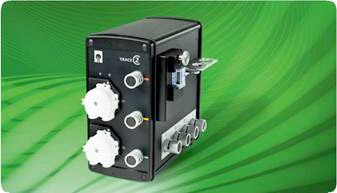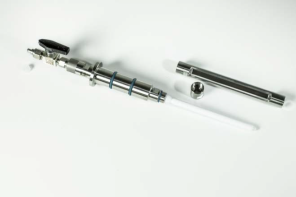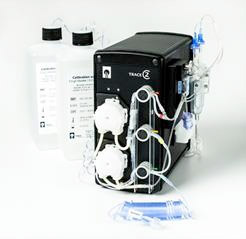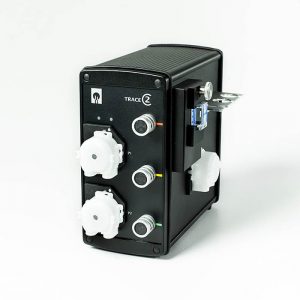Reports
Continuous Glucose / Lactate Analyzer for Fermentation Monitoring & Control


Bioreactor Glucose Monitoring Technology Description
A Glucose Lactate Analyzer for Fermentation and Cell Culture by TRACE Analytics
Glucose measurement within a bioreactor has always been a difficult challenge for scientists running bacterial fermentations. Microbial processes exhibit rapid changing conditions and require accurate and timely measurement of Glucose evolution to maximize their throughput.
In most cases, high frequency manual sampling imposes an excessive but obligatory work load that takes precious resources from other very important operations. Additionally, it is necessary for a sample to be removed from the bioreactor (fermenter) under sterile conditions and, in many cases, the reproducibility and relevance of the sample taken may be compromised during the sampling.
The Trace Analytics C2 Glucose Lactate Analyzer provide an efficient and easy to use method to monitor Glucose and Lactate online, eliminating the need of manual sampling.
The operation principle on this device is based on molecular diffusion of glucose/lactate into a carrier buffer followed by an enzymatic reaction and sensing on a triple layer biosensor. The ruggedness and compact size of these sensors is obtained by a production technique combining immobilized enzymes and electrochemical transducers in a miniature flow path.
Sensor Technology:The TRACE Glucose Lactate analyzer / biosensor consists of small 1 sq. cm ceramic plate with platinum thick-film electrodes that are coated with the corresponding sensing enzymes (glucose oxidase (GOD) or lactate oxidase (LOD). By enzymatic conversion of Glucose into Gluconolactone and Lactate into Pyruvate, the resulting H2O2 from each reaction is individually measured by Amperometry reflecting the right concentration value of each compound.
Sampling Techniques:The TRACE C2 Control and Multi TRACE Analyzers feature several sampling options:
- Filtration with ESIP SS & probe (polypropylene membrane), generally used in larger SS vessels
- Dialysis with SS PG13.5 probe for small glass vessels
- Dialysis with single use dialysis tubing
Filtration provides a very rugged and very user friendly way to perform the measurement. This method is normally chosen by medium to large scale pilot plant or GMP operations using SS vessels. Because the reactor medium is extracted, the range of applications is limited to processes for which there’s a sufficient reactor volume or those working on continuous-feed.
Dialysis sampling is an excellent option for processes where the amount of sample volume is small or very limited. This method only removes low molecular substances from the reactor medium, without reducing the volume of fluid. This second approach is generally chosen in single use applications or rather small PD vessels.


Independently from the sampling method chosen, the initial calibration is completely automatic. The end user only needs to load the Calibration and Carrier buffers in the corresponding tubing lines and press start to initiate the process.
The analyzer will measure each Calibration standard 3 times and accept the values when the standard deviation for the 3 measurements is better than 3%. Once the sensor calibration is completed, the analyzer will initiate the measurement routine automatically. If a Dialysis sampling method is used, the operator has the option to do a grab sample adjustment to optimize the calibration accuracy. No other adjustments are required if sampling by Filtration. Measurement results are transmitted out the system via RS85 into an external PC or controller.
 Feeding Control:
Feeding Control:
The C2 Analyzer integrated PID controller allows to maintain a constant glucose concentration level. The self-contained feeding pump is suitable for bioreactors with a working volume up to 5 L. Feeding in larger bioreactors is also possible by direct connection of an external pump (e.g. Watson-Marlow 505DU) via the serial port.
The Glucose concentration can be measured and controlled in the range 0.1 to 40 grams/Liter. Additionally, the lactate measurement ranges between 0.05 g/L and 10 g/L.
Available through PROAnalytics: Online Metabolite Analyzer from TRACE Analytics.

